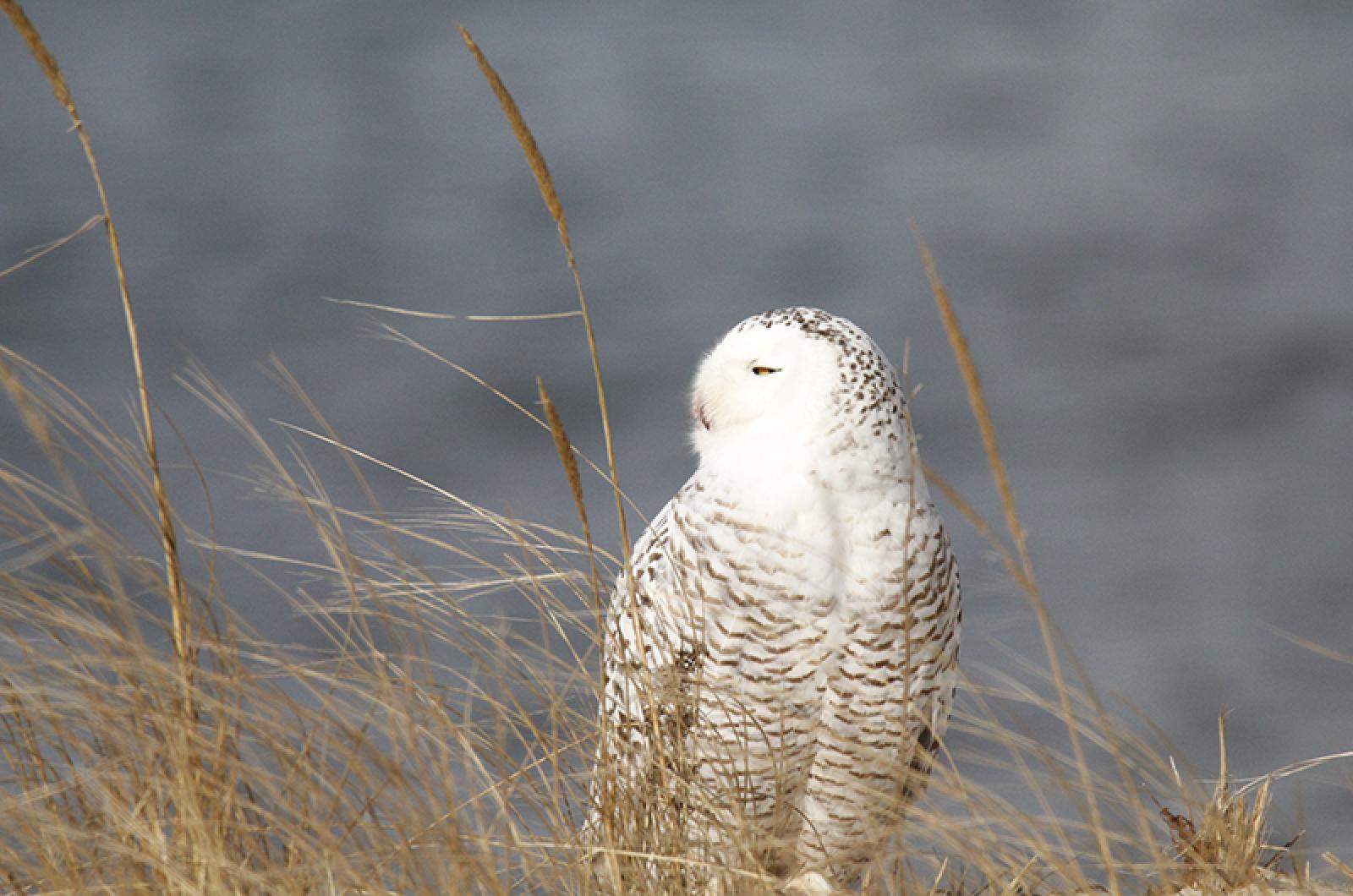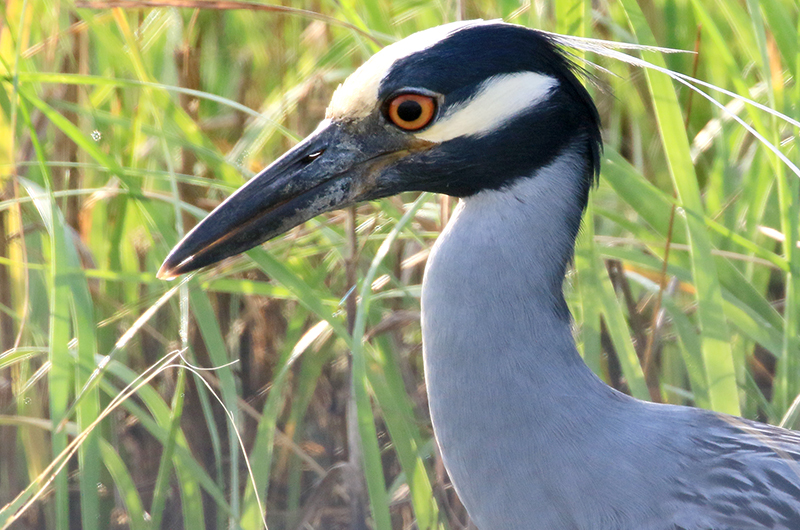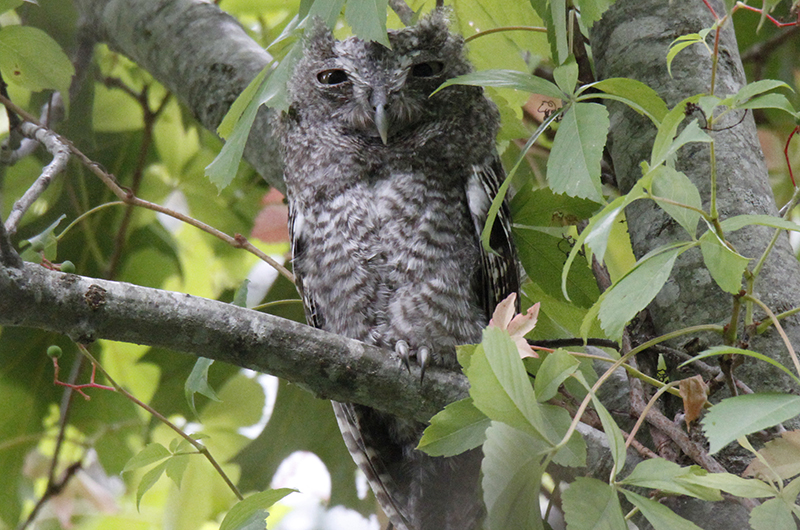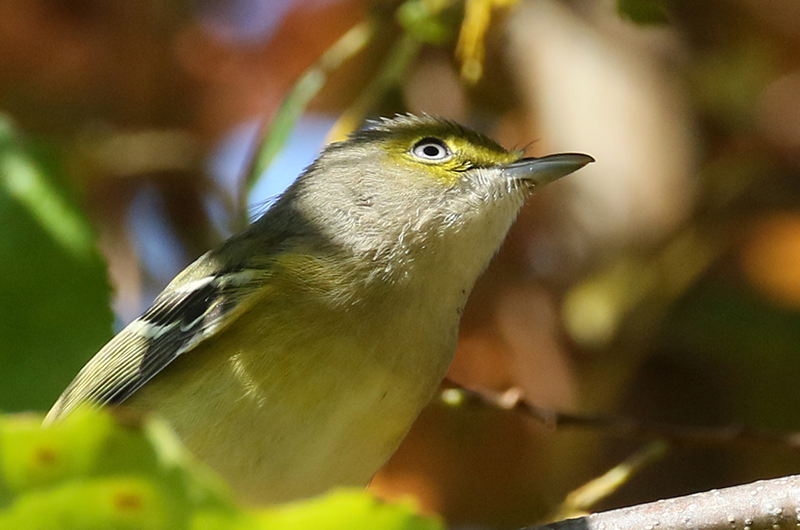Do you remember when snowy owls were rare winter visitors? And we were lucky to have one visiting for a day or maybe two in the winter? This was just five years ago. And more recently, with us spoiled by frequent and persistent winter sightings, being ever hopeful about seeing one in the summer? Well, ask and you shall receive!
Nate Durawa spotted and photographed a mostly white, probably male, snowy owl at his house in Edgartown on June 11. It was first seen at the edge of his yard, and then it moved to the top of some steps adjacent to his house. Holly Mercier was also able to photograph this unusual visitor, which has not been seen again since that morning.
Out of curiosity, I checked the website ebird.org, which documents bird sightings world-wide, to see if anyone else nearby had seen a snowy owl in June. Another surprise: there have been 15 other sightings, 11 in the eastern Great Lakes, June 1 and 2 at Revere Beach, June 5 in New York city, June 7 in Portland, Me., and closer to home, on June 7 on Great Point on Nantucket. A totally-weird sighting.
Bird Sightings
Two mostly southern herons are also unexpected at this time of the year, when they are supposed to be at their nesting colonies. Doreen McCabe spotted an adult little blue heron in the marshes by Sengekontacket Pond on June 11, as she was bicycling along State Beach. This species is a scarce breeder elsewhere in coastal Massachusetts. And on June 8, Lanny McDowell and Pete Gilmore found a yellow-crowned night-heron at Sheriff’s Meadow Sanctuary in Edgartown. This latter species breeds as close as Long Island and southwestern Connecticut. Both species could be nesting here without our knowledge, as we do not know where all the wading bird nesting colonies are.
White-eyed vireos are not known to nest on the Vineyard either. They are one of the few species whose population has increased in the last 50 years. At least one individual has been in the thickets at Great Rock Bight since May 8. Most recently, my Saturday morning guided birding tour visited that site and heard one, maybe two, singing from the shrubbery along the Marl Pond loop trail. It is amazing how much noise such a small bird can make; its song is a very loud “CHICK-a-per-weeoo-CHICK,” yet we could not see the bird even though it was no more than 50 feet away, obscured by the dense shrubbery.
Another small but loud songbird is the house wren. Tami Dinkel spotted one visiting her suet feeder on June 9.
Jerry Twomey has been enjoying his views of baby screech owls — now old enough to be seen peering out of the nest box he put up in his back yard about five years ago.
On the evening of June 10, Michael Ditchfield heard two whip-poor-wills calling off Tea Lane.
Common loons can be found occasionally through the summer. Pete Gilmour is the latest to spot a pair off Lambert’s Cove Beach on June 8. They were in breeding plumage and were yodeling like they do up north on their nesting lakes.
Savannah sparrow, American goldfinch, and osprey were the highlights of Katherine Oscar’s June 7 visit to the Land Bank’s Short Cove Preserve off Tiah’s Cove Road in West Tisbury.
Tom Hodgson found a male northern parula visiting his feeders on June 6. The warbler was just as interested in its reflection in the nearby glass as it was with the food in the feeders.
That same day, Kath MayWaite spotted both a black skimmer and a laughing gull in with the herring gulls at Mattakessett Bay.
There are a few species that used to nest on the Island but are not getting reported. These species were never common and widespread during the breeding season, but now they may not breed here anymore.
Two of these species are thrushes: hermit thrush and veery. Both nested in a few scattered locations across the Island, but they have not been seen nor heard in recent summers. And as thrushes, their voices are rather easy to hear although there are other species that can easily be confused.
Male scarlet tanagers may be conspicuous and more widespread in the spring with their loud robin-like song and their black wings contrasting to their otherwise bright red bodies. But I have not heard them recently in their preferred habitat of wet woodlands.
Purple finch songs and plumages are easily confused with the much more common house finch. They too are no longer present in the areas where they used to be found.
Please report sightings of any of these four species as it would help to know whether they still breed on the Island.
The breeding season is in full swing, and your observations will help document their nesting. Please report your bird sightings to birds@mvgazette.com.
Robert Culbert leads Saturday morning Guided Birding Tours and is an ecological consultant living in Vineyard Haven.











Comments (1)
Comments
Comment policy »